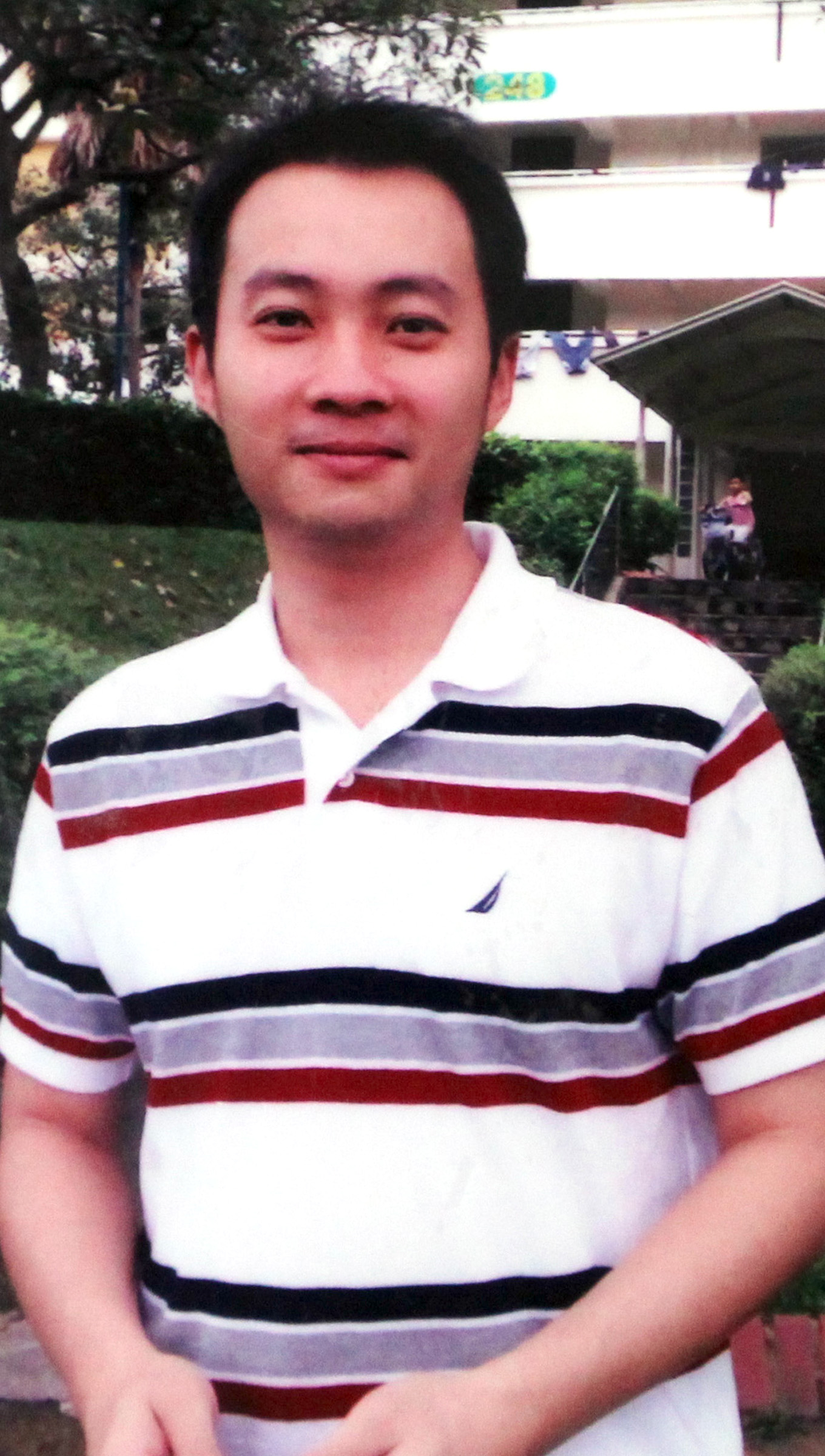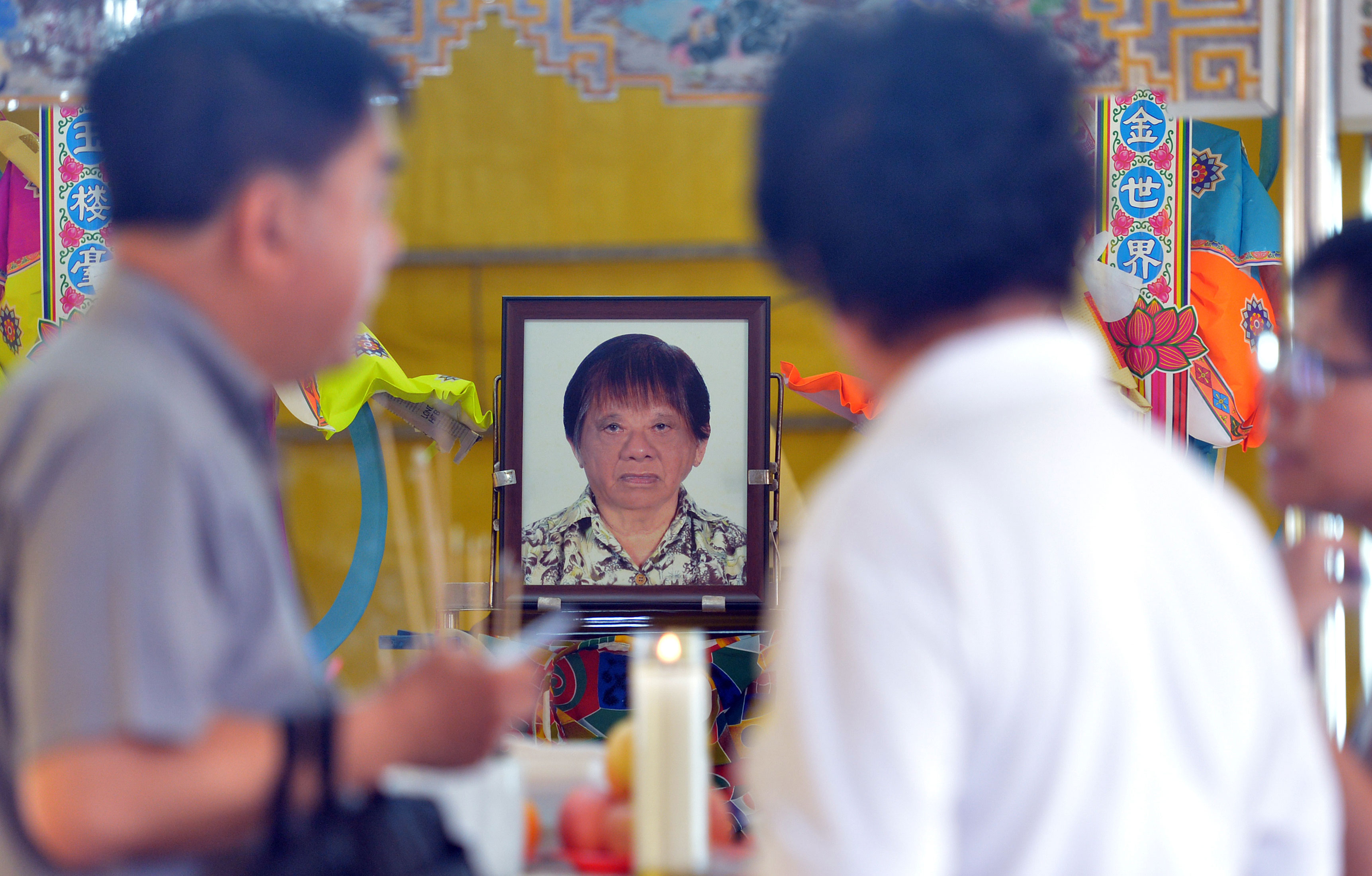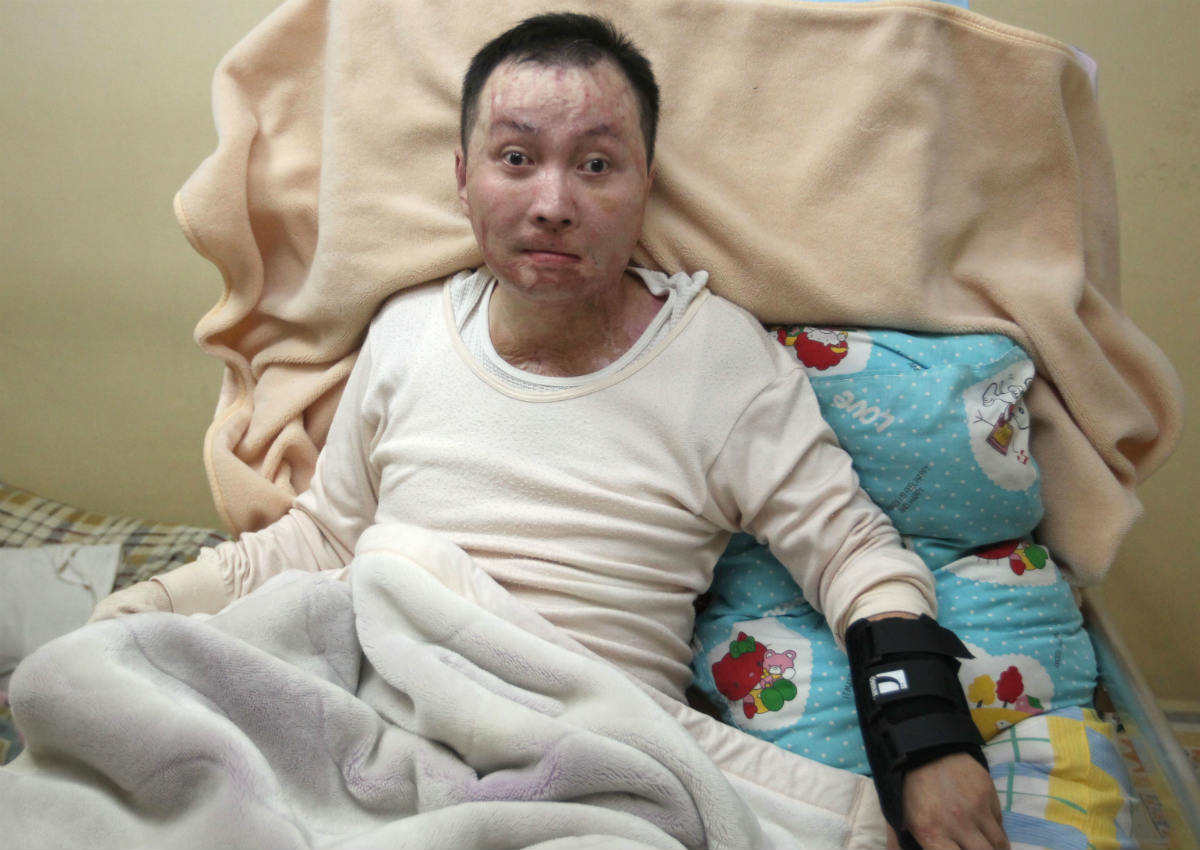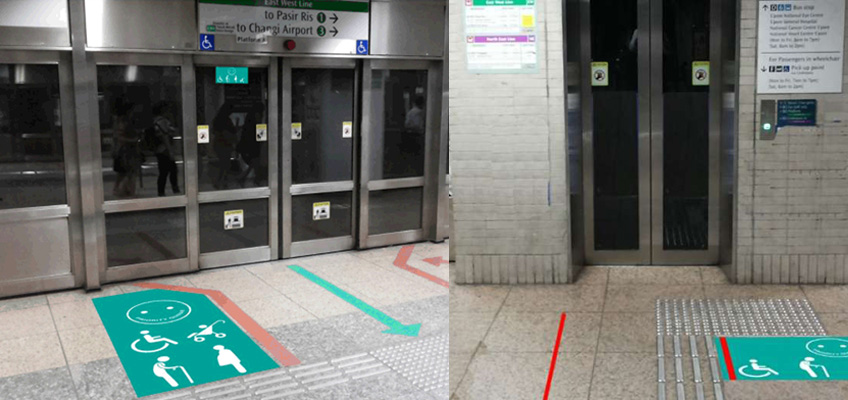He is at an age where his father could be reading bedtime stories to him, but for Benjamin (not his real name), it is the opposite.
Instead, the eight-year-old reads to his wheelchair-bound father, talks to him, and plays around him – without expecting a response.
His father, Mr Tan Yun Yeow, 37, cannot walk or talk after a horrific workplace accident in 2009.
Mr Tan’s younger brother, Rodney, 28, said: “(Benjamin) is not scared off by my brother’s situation. He just understands that his father is sick and he’s trying to take care of him.”
Mr Tan’s plight was thrust into the spotlight after an apex court ruling on Tuesday.
Chief Justice Sundaresh Menon dismissed an appeal against Mr Rodney Tan’s ability to sue his brother’s former employer for $3 million in damages over the accident. (See report on next page.)
The ruling has evoked mixed feelings for the family, Mr Rodney Tan told The New Paper yesterday in a phone interview.
The sales manager said: “I think as a family, we feel relieved. But at the same time, we don’t know how this whole thing is going to pan out.
“It’s been six, seven years… There have been some ups and downs not just emotionally. Financially, it’s also a strain on the family.”
Seven years ago, Mr Tan, an engineer, was logging data at a worksite in Changi when there was an electrical explosion. The blast left burns on 38 per cent of his body – his face, torso and arms. He also slipped into a coma.
Complications developed while he was unconscious. First, his kidneys failed. Then, he contracted pneumonia in his right lower lung.
Shortly after, his heart stopped beating for a while.
“Many times, the doctor asked us to prepare for the worst. That initial six months while he was in the ICU (intensive care unit) were very challenging,” Mr Rodney Tan said, adding that his brother’s condition was shrouded in uncertainty.
“We were so afraid he couldn’t make it.”
A month later, the injured engineer underwent a tracheostomy – a surgically-made hole that goes through the front of the neck and into the trachea.
Mr Tan woke up from his coma slightly over a year later with a “reduced conscious level”, according to court documents. He was assessed to be of unsound mind and incapable of managing his financial and personal affairs.
Mr Rodney Tan said he is not clear about the extent of his brother’s brain damage, which he suspects could be due to the respiratory arrest back in 2009.
“He is able to blink and move his head. But we don’t know how bad the damage is or whether he understands us,” he said.
NEW FATHER
The accident happened at a time when Mr Tan was basking in the joy of parenthood.
Mr Rodney Tan said: “When the accident took place, (my brother) was only a year into his marriage.
“He had moved out to his own place with his wife and six-month-old son just three months before…
“He had only just moved into a new chapter of his life and the accident changed it all overnight.”
Mr Rodney Tan, who lives with his injured brother as well as their younger brother and their parents in a five-room flat, said communicating with him takes a lot of guesswork.
“Basically, we can’t communicate with him. It’s hard for him to tell us what he wants as well. Sometimes, we can only feel if he’s relieved, uncomfortable or happy. He won’t be able to give any form of signal,” he said.
The communication barrier exasperated the family initially, he admitted. They had to figure out from scratch what Mr Tan likes and dislikes.
“We would try to get him different types of food to figure out what he likes. The one he likes, he will eat a little bit more…
“It’s frustrating for us, for sure, but all the more frustrating for him. He used to be a very active person, so for him to lose his ability to communicate and move around overnight…” Mr Rodney Tan said, his voice trailing off.
Now that he can proceed with suing his brother’s former employer, he will discuss the next step with his lawyers.
The family, except his mother, Madam Lim Poy Nue, 64, has largely come to terms with Mr Tan’s condition
Madam Lim, who works odd jobs occasionally, told TNP in a separate interview: “Once in a while, memories still come back and haunt us. But at least I know (my son) is still alive.”
Doctors cannot predict if Mr Tan will eventually recover, but his loved ones are grasping at every glimmer of hope.
The family is still paying the hospital bills – which came up to $700,000 – while keeping a lookout for possible tests that could help Mr Tan.
Said Mr Rodney Tan: “There are some cases who stay the same forever, but some cases may take a turn for the better. What we are trying to do now is to let him go for every single test (that may help him)…
“I’m happy to say that seven years down the road, we are still hoping for a miracle.”
Basically, we can’t communicate with him. It’s hard for him to tell us what he wants as well. Sometimes, we can only feel if he’s relieved, uncomfortable or happy. He won’t be able to give any form of signal.
– Mr Rodney Tan, on his brother, Mr Tan Yun Yeow, who survived an explosion seven years ago
 Mr Tan Yun Yeow before the accident.
Mr Tan Yun Yeow before the accident.
ABOUT THE CASE
On Tuesday, the Court of Appeal upheld a decision allowing the brother of a mentally incapacitated engineer to sue for damages on his behalf.
In 2009, Mr Tan Yun Yeow, 37, suffered severe burns after an electrical explosion at his workplace.
He slipped into a coma and only regained consciousness after more than a year. The hospital then found him to be mentally incapable of managing his financial and personal affairs.
In 2010, on the basis of a lawyer’s letter that Mr Tan’s next-of-kin wished to claim compensation under the Work Injury Compensation Act (Wica), the Commissioner for Labour assessed that Mr Tan was entitled to $225,000 – the maximum sum under the law for accidents before Jan 1 this year.
An award of compensation under Wica bars a worker from suing for further damages in court.
BROTHER APPOINTED
In August 2012, Mr Tan’s younger brother, Rodney, was appointed by the court to make legal claims on behalf of Mr Tan under the Mental Capacity Act (MCA).
Under the MCA, the court may appoint a deputy to make decisions for those who lack the mental capacity to do so. (See report, above.)
Through his lawyers, Mr Noor Marican and Mr Ramasamy Chettiar, Mr Rodney Tan sought to reject the compensation and instead seek $3 million in damages in a High Court suit.
But the insurer for Mr Tan’s employer objected, and argued through lawyer K. Anparasan that the Commissioner had the discretion to accept a claim by the next-of-kin, thus making the 2010 assessment binding.
Justice Quentin Loh disagreed, and ruled that Mr Tan lacked the capacity to make a choice and only a person appointed by the court had the right to act on his behalf.
Last year, he quashed the 2010 notice of assessment by the Commissioner, stressing that the courts will “jealously guard the rights of injured workers who lack the mental capacity and competence to make choices that are in their best interests”.
The insurer appealed. Mr Anparasan argued that Mr Rodney Tan had the legal standing to claim compensation on behalf of his brother.
Second Solicitor-General Kwek Mean Luck, who acted for the Commissioner, said in his submissions that the insurer was trying to force Mr Tan to accept compensation he never chose to claim, depriving him of his right to claim for damages under common law.
On Tuesday, the apex court, led by Chief Justice Sundaresh Menon, dismissed the insurer’s appeal.
WHAT IS THE MENTAL CAPACITY ACT?
The Mental Capacity Act addresses the need to make decisions for persons who are 21 years old and above, but lack the mental capacity to do so.
It allows the court to appoint a deputy to make decisions and act on behalf of a mentally incapacitated person who has not made a Lasting Power of Attorney (LPA).
An LPA is a legal document that allows someone to make decisions on a person’s welfare or property matters on his behalf when he lacks the mental capacity.
The Act also allows parents of intellectually disabled children (below the age of 21) to apply to the court to appoint a deputy.
This ensures that their child’s future care is arranged for, should they die or lose their mental capacity.
fjieying@sph.com.sg

This article was first published on April 1, 2016.
Get The New Paper for more stories.
















 Mr Tan Yun Yeow before the accident.
Mr Tan Yun Yeow before the accident. 







